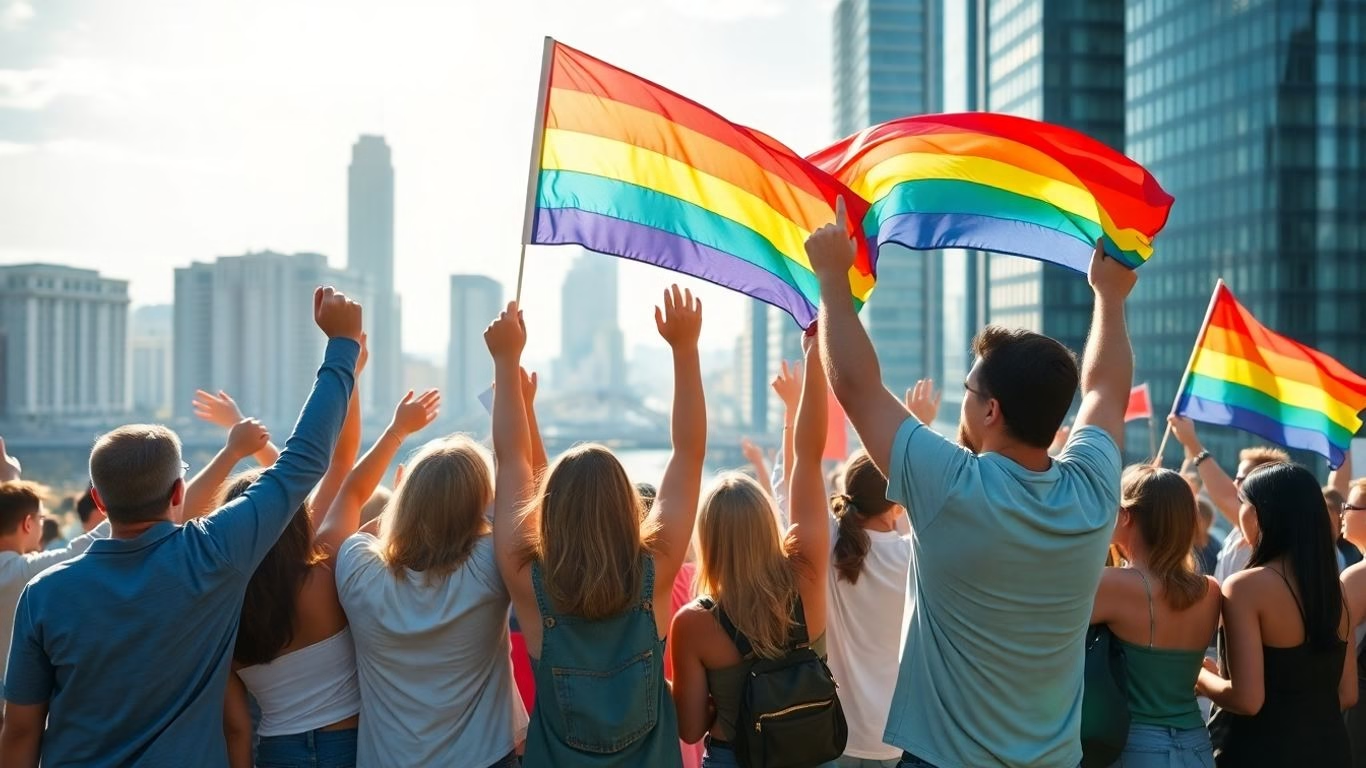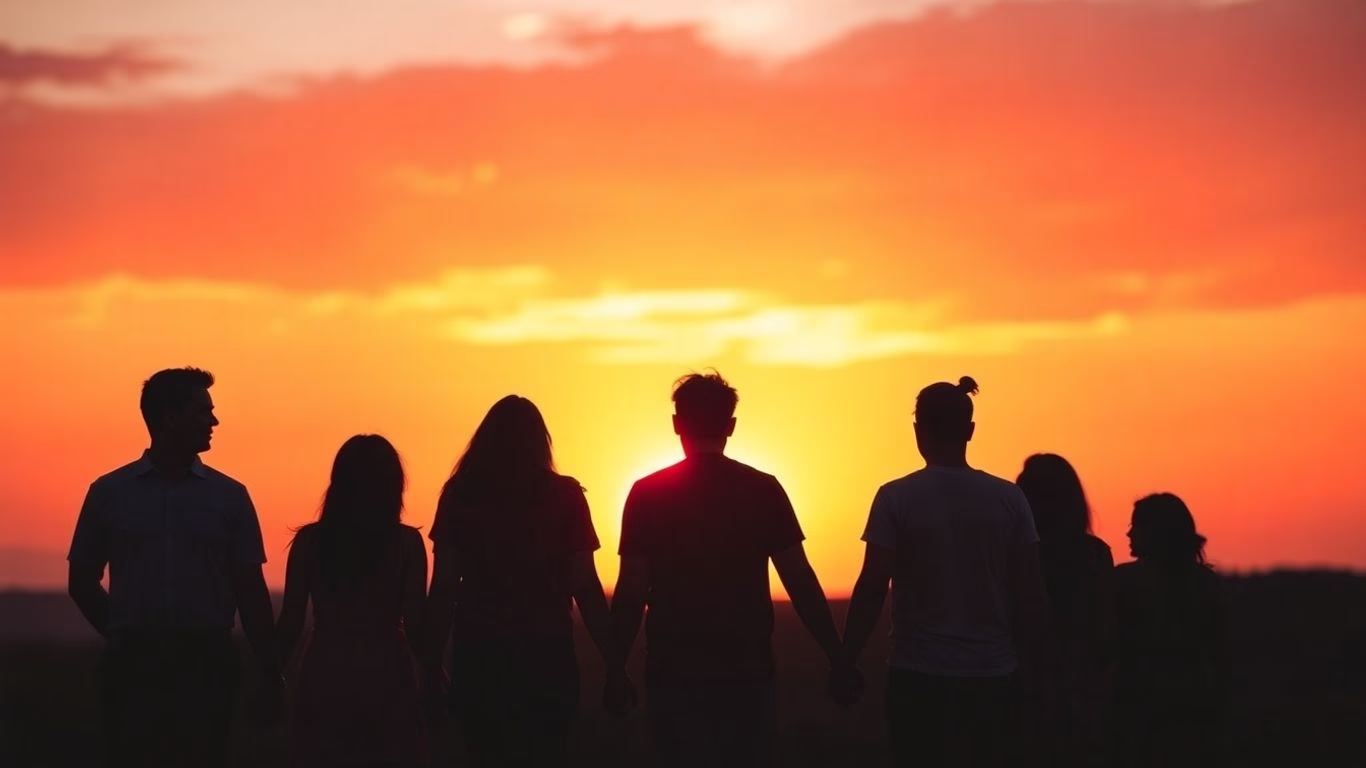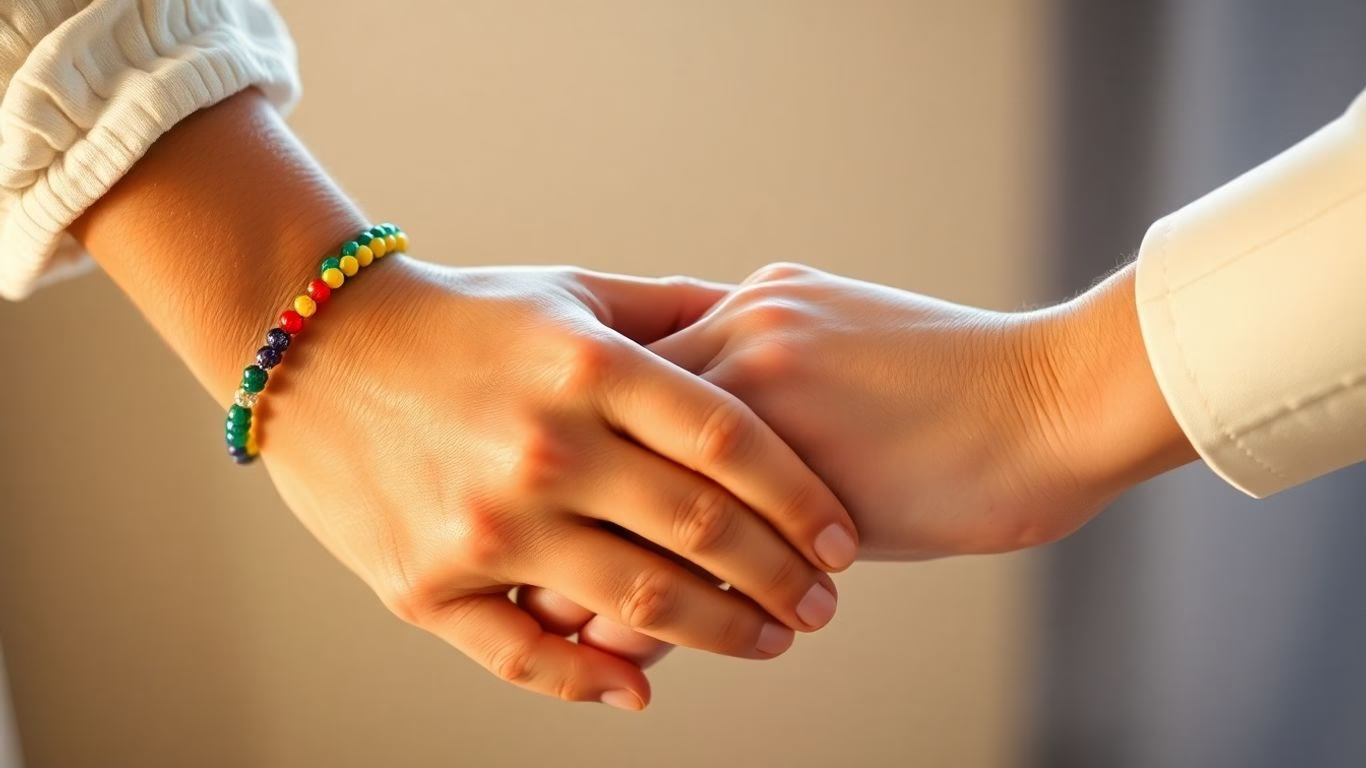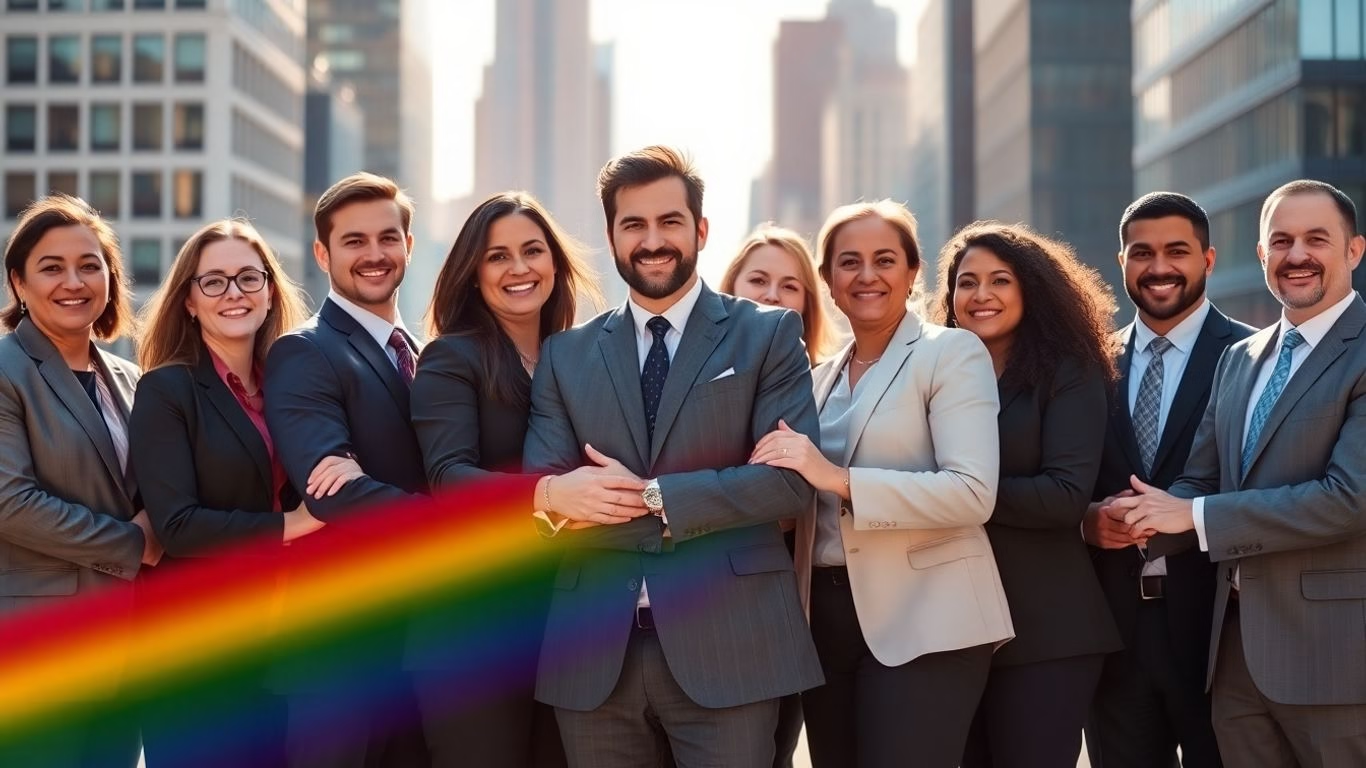It’s easy to think of LGBTQ+ rights as a Western thing, but that’s just not true. Around the world, people are pushing for acceptance and change, even in places where it’s really tough. We’re talking about Muslim-majority countries, where traditions and laws can make life hard for queer folks. But even there, activists are finding ways to make a difference, slowly but surely changing lives. This isn’t about big, loud protests all the time; it’s often about quiet work, building communities, and finding common ground. The focus keyword for this piece is: Breaking Barriers: How LGBTQ+ Activism is Changing Lives in Muslim-Majority Countries.
Key Takeaways
- Activists in Muslim-majority countries often use quiet, local strategies rather than loud, public ones to stay safe and make progress.
- Arts and cultural discussions can help people understand LGBTQ+ issues better and bridge divides.
- There’s a global pushback against LGBTQ+ rights, sometimes fueled by outside groups and used by governments to distract people.
- Building safe spaces and supporting people who hold multiple identities, like being Muslim and LGBTQ+, is really important for acceptance.
- Success relies on local groups adapting their methods to their specific communities and using familiar symbols to gain acceptance.
Navigating Complex Landscapes: Strategies for LGBTQ+ Advocacy

The Nuance of Visibility: Balancing Openness and Safety
Figuring out how much to show and when is a big part of working for LGBTQ+ rights in places where it’s tough. Sometimes, being loud and proud can draw attention, which isn’t always good. It’s about finding that sweet spot between letting people know you exist and making sure everyone stays safe. Think of it like this: you wouldn’t blast your personal business in a crowded, unfriendly room, right? It’s similar here. Strategies that work in one country might cause serious problems in another. For instance, calling out governments publicly might actually make things worse for the people you’re trying to help. It’s often better to work quietly, behind the scenes, especially when dealing with governments that aren’t friendly to LGBTQ+ issues. This means focusing on building trust and support networks without making a big show of it. The goal is to create space for people to be themselves, but only when and where it feels safe.
Empowering Local Voices: The Crucial Role of Civil Society
When we talk about making progress for LGBTQ+ folks in different countries, the people on the ground are the real MVPs. Local groups and activists know their communities inside and out. They understand the cultural stuff, the local politics, and what will actually work without causing a backlash. They’re the ones who can translate global ideas about rights into something that makes sense locally. It’s not about outsiders coming in and telling people what to do; it’s about supporting the people who are already doing the work. These local groups often have smart ideas about how to approach things, sometimes in ways that might seem a bit unexpected from the outside. They might suggest being really low-key for a while, then maybe a bit more visible when the time is right. It’s a careful dance, and they lead the steps.
Beyond ‘Naming and Shaming’: Cultivating Supportive Alliances
There’s a temptation to call out bad actors and governments when they do wrong things related to LGBTQ+ rights. While that might feel good and seem like the right thing to do, it doesn’t always help. Sometimes, this kind of public criticism can actually make the situation worse for LGBTQ+ individuals in those countries. Instead of just pointing fingers, it’s often more effective to build bridges and find common ground. This means looking for allies, even in unexpected places. It could be other community groups, international organizations, or even individuals within governments who might be sympathetic. The idea is to create a network of support that can offer help and resources without necessarily drawing negative attention. This approach focuses on practical assistance and building relationships, which can lead to more sustainable change over time. It’s about collaboration, not confrontation, and finding ways to work together for a better future.
Challenging Perceptions: LGBTQ+ Activism and Cultural Dialogue
It’s easy to think of LGBTQ+ activism as a straightforward fight for rights, but in many Muslim-majority nations, it’s a lot more complicated. The goal isn’t just about changing laws; it’s about shifting how people think and feel, which is a much slower process. This involves talking about things in ways that make sense locally, not just importing ideas from elsewhere. Sometimes, the most effective way to make progress is by working within existing cultural frameworks, rather than against them.
Art as a Catalyst for Understanding
Art has a unique way of opening up conversations that might otherwise be shut down. When artists explore themes of identity, faith, and sexuality through their work, they can create spaces for people to see things from a different perspective. This isn’t about forcing anyone to change their beliefs, but rather about presenting new ways of thinking about complex issues. Think about visual arts, music, or even literature – these mediums can bypass some of the usual defenses people put up when discussing sensitive topics. It’s a way to build bridges and encourage empathy, showing that diverse experiences can coexist.
Reconciling Faith and Identity
For many queer Muslims, faith and identity aren’t separate things; they’re deeply intertwined. The idea that you have to choose between being religious and being LGBTQ+ is a false one for many. Activism in this space often involves finding ways to show that these aspects of life can be reconciled. This might mean re-examining religious texts, highlighting historical figures who might be interpreted as queer-affirming, or simply creating communities where people can be both their religious and queer selves without judgment. It’s about showing that you can be a person of faith and also love who you love. This is a really important point for many people trying to live authentically, and it’s something that needs more attention in global discussions about Queer Muslims face significant challenges.
Deconstructing Stereotypes in Global Discourse
There’s a lot of misunderstanding out there, often fueled by global media and political agendas. When discussions about LGBTQ+ rights happen internationally, they can sometimes be framed in a way that doesn’t reflect the reality on the ground in Muslim-majority countries. This can lead to stereotypes that paint all LGBTQ+ people or all Muslim communities with the same brush. Activists work to counter these simplistic narratives by sharing their own stories and experiences. They aim to show the diversity within communities and challenge the idea that LGBTQ+ issues are solely a Western import or that they are inherently incompatible with local cultures and religions. It’s about pushing back against generalizations and promoting a more nuanced understanding of the world.
The global conversation around LGBTQ+ rights can sometimes feel like a one-size-fits-all approach. However, local realities are incredibly diverse, and what works in one place might not work in another. Genuine progress often comes from understanding these specific contexts and adapting strategies accordingly, rather than imposing external solutions. This requires patience, deep listening, and a willingness to work with local partners who understand the cultural and social landscape intimately.
The Global Pushback: Understanding Resistance to LGBTQ+ Rights

Transnational Networks Fueling Opposition
It’s not just local groups acting alone. There’s a whole network of conservative activists and organizations working across borders. They share ideas and resources, kind of like how human rights groups do, but for the opposite goal. These groups, sometimes called the international “gender lobby” by their opponents, are connecting with each other, no matter the country or religion. Their aim is to influence big international bodies and also governments and parliaments everywhere. They’re really organized in pushing their agenda.
Autocratic Regimes Weaponizing LGBTQ+ Issues
Some leaders, especially in countries that aren’t very democratic, are using LGBTQ+ issues as a tool. They tell their people that things like changing gender norms are a threat to their religion, their nation, their kids, and their families. It’s a way to rally support by creating a sense of danger. They present LGBTQ+ rights as something foreign, a Western idea trying to break down their traditions and national identity. This makes it easier for them to push back against liberal ideas and maintain control.
The ‘Culture Wars’ Imported Abroad
What’s happening isn’t always just about what’s going on inside a country. Sometimes, these debates and conflicts, often called “culture wars,” are being brought in from other places. Ideas about traditional values versus individual rights are spreading globally. This can create a lot of division, making it harder for LGBTQ+ people to gain acceptance. It turns discussions about rights into polarizing arguments that can be easily manipulated.
The pushback against LGBTQ+ rights is a global phenomenon. It often bonds together governments and political groups that aren’t very democratic. They promote traditional values as a way to counter individual human rights. The idea is that things like changing gender identity are a threat to the stability of tradition and the nation.
Here’s a look at how this opposition often manifests:
- Framing as a Threat: Opponents frequently portray LGBTQ+ rights as a danger to established social structures, religious beliefs, and family values.
- International Coordination: Conservative and religious groups actively collaborate across national borders to share strategies and amplify their message.
- Political Exploitation: Leaders, particularly in authoritarian or illiberal states, use anti-LGBTQ+ rhetoric to consolidate power and distract from other issues.
- Cultural Export: The narrative that LGBTQ+ rights are a Western imposition designed to undermine local cultures is a common tactic used to generate resistance.
Building Bridges: Fostering Inclusion and Acceptance
Sometimes, the most powerful way to create change is by simply making people feel seen and valued. It’s about finding common ground, even when it seems impossible. This section looks at how we can create spaces where LGBTQ+ individuals, especially those from Muslim-majority backgrounds, can feel safe and accepted, not just as refugees or asylum seekers, but as whole people.
Creating Safe Havens for Queer Muslims
Finding a place that understands your multiple identities can be incredibly difficult. For queer Muslims, this often means navigating a world that might reject them for being gay or for being Muslim. The goal here is to build communities that don’t force anyone to choose between their faith and their identity. It’s about recognizing that you can be both. Think about organizations that offer support without asking people to hide who they are. These safe spaces are vital for mental and emotional well-being, allowing individuals to connect with others who share similar experiences. These havens are not just about survival; they are about thriving.
The Intersectionality of Identity and Support
We all have many layers to who we are – race, religion, gender, sexuality, nationality, and more. When we talk about support, it’s important to see the whole person. A queer Muslim refugee isn’t just a refugee, or just queer, or just Muslim. They are all of these things at once. Support systems need to acknowledge this complexity. For example, some faith-based groups have started to become more welcoming, realizing that people can be both religious and LGBTQ+. This means moving beyond assumptions and really listening to what people need. It’s about recognizing that a simple hug or a kind word can mean the world, especially when you feel like you don’t belong anywhere. It’s about providing support that respects every part of a person’s identity, not just the parts that are easy to see or understand. We need to think about how different aspects of someone’s life affect their experiences and tailor support accordingly. This is where we see amazing work being done by groups like those supporting LGBTQ+ South Asians.
Redefining Belonging on Local Terms
What does it mean to belong? It’s not a one-size-fits-all answer. In different communities, the idea of belonging will look different. Instead of imposing outside ideas, it’s better to work with what’s already there. This could mean using local traditions or symbols to show acceptance. It’s about making sure that LGBTQ+ individuals feel like they are part of their own communities, not separate from them. This might involve working with local leaders or community groups to slowly shift perspectives. It’s a long process, but it’s about building acceptance from the ground up, in ways that make sense to the people living there.
True acceptance comes when people feel they can be their full selves without fear of judgment or rejection. It’s about creating environments where everyone feels a sense of connection and value, regardless of their background or identity.
Here are some ways communities are redefining belonging:
- Community Dialogues: Organizing open conversations where people can share their stories and perspectives.
- Cultural Integration: Finding ways to weave LGBTQ+ inclusion into existing cultural practices and celebrations.
- Education and Awareness: Providing resources and information that challenge stereotypes and promote understanding.
- Allyship Development: Encouraging and training allies within the community to actively support LGBTQ+ individuals.
The Power of Local Action: Tailoring Advocacy for Impact
When we talk about LGBTQ+ activism in Muslim-majority nations, it’s easy to get caught up in the big picture, the international headlines, or the grand pronouncements. But the real magic, the stuff that actually makes a difference on the ground, often happens at the local level. It’s about understanding the specific place you’re in, the people there, and what makes sense for them. You can’t just copy-paste strategies from one country to another and expect them to work.
Adapting Strategies to Local Realities
What works in one city might be a total non-starter in another, even within the same country. Think about it: the cultural norms, the political climate, the religious interpretations – they all shift. So, activists have to be super flexible. Sometimes, being loud and visible is the way to go, but other times, it’s all about working quietly behind the scenes. It’s a delicate dance, really. For instance, direct confrontation might backfire spectacularly, leading to more crackdowns. Instead, building relationships with community leaders or using existing social structures can be far more effective. It’s about finding those openings, those moments where you can push for change without putting people in immediate danger. This often means working with local civil society groups who know the landscape best. They’re the ones who can advise on how to frame issues in a way that connects with people’s daily lives, rather than just abstract rights.
Leveraging Indigenous Symbols for Acceptance
This is where things get really interesting. Instead of importing Western ideas or symbols, activists are finding ways to use things that are already meaningful within their own cultures. It’s about showing that LGBTQ+ identities aren’t foreign concepts but can be understood and accepted within existing cultural frameworks. This could involve reinterpreting religious texts to highlight themes of love and compassion, or using traditional art forms to tell stories that challenge stereotypes. It’s about making the conversation feel less like an imposition and more like a natural evolution of existing values. For example, some groups have found success by focusing on shared values like family and community, showing how LGBTQ+ inclusion can strengthen these bonds rather than threaten them. It’s a way to build bridges and make the message more palatable to a wider audience.
The Indispensable Role of Grassroots Movements
Ultimately, the most impactful work is often done by people who are part of the community themselves. These grassroots movements are the backbone of LGBTQ+ activism in many Muslim-majority nations. They understand the local nuances, they have the trust of their communities, and they are the ones who can sustain the work over the long haul. Supporting these movements, whether through funding, training, or simply amplifying their voices, is absolutely key. They are the ones creating safe spaces, offering support to individuals, and slowly but surely changing hearts and minds from the ground up. These movements are often the first point of contact for individuals exploring their identity, providing a lifeline of support and community. Many LGBT Muslims rely on these informal networks and safe spaces for community and support, with some individuals even leveraging business ownership as a protective strategy within these environments.
The most effective advocacy often comes from within, drawing on local knowledge and cultural relevance. It’s about adapting, not adopting, and finding ways to weave LGBTQ+ acceptance into the existing social fabric. This requires patience, creativity, and a deep respect for the communities being served.
Transformative Accommodations: Creating Welcoming Spaces
Sometimes, the most impactful changes happen in the small, everyday interactions. When we talk about creating welcoming spaces for LGBTQ+ individuals in Muslim-majority nations, it’s not always about grand policy shifts. Often, it’s about the quiet, persistent work of making people feel seen and safe, even when their identities might clash with deeply held societal norms. This is where the idea of “transformative accommodations” really comes into play.
Supporting LGBTQ+ Asylum Seekers’ Self-Articulation
For folks seeking asylum, especially those fleeing persecution based on their sexual orientation or gender identity, the process can be incredibly isolating. They often have to explain their experiences to officials who might not understand or even accept their identities. The goal here is to create environments where these individuals can share their stories in their own words, without feeling pressured to fit a certain narrative. It’s about respecting their journey and allowing them to define their own experiences of safety and belonging.
- Listen without judgment: Create spaces where personal narratives are heard and validated.
- Offer flexible support: Recognize that needs vary; some may need legal aid, others emotional support, and some both.
- Connect with community: Facilitate connections with other LGBTQ+ individuals or allies who understand their situation.
The challenge often lies in how systems expect asylum seekers to present their identities. If someone’s religious background is seen as inherently opposed to their LGBTQ+ identity, they might feel forced to choose one over the other to be believed. Transformative accommodations push back against this, acknowledging that people can hold multiple, sometimes seemingly conflicting, identities and experiences simultaneously.
Beyond Categorization: Recognizing Multifaceted Identities
It’s easy to fall into the trap of thinking in boxes. We might assume that being LGBTQ+ means you can’t be religious, or that being from a particular cultural background means you must adhere to certain traditions. But reality is far more complex. People’s identities are layered and fluid. A Muslim person can be gay, a Christian person can be transgender, and these identities don’t cancel each other out. Creating welcoming spaces means acknowledging and honoring this complexity.
| Identity Aspect | Common Assumption | Transformative Approach |
|---|---|---|
| Religion & Sexuality | Mutually Exclusive | Integrated and Negotiated |
| Cultural Background & Gender Identity | Fixed Roles | Fluid and Self-Defined |
| Nationality & Personal Experience | Uniform Narrative | Diverse and Individualized |
Community Building in Unlikely Places
Welcoming spaces don’t always look like what you might expect. Sometimes, they emerge in places you wouldn’t initially think of. Think about informal gatherings in homes, online forums, or even shared creative projects. These are the spaces where people can connect on a human level, sharing experiences and building solidarity. It’s about finding common ground and creating pockets of acceptance, even when broader societal structures are resistant.
- Shared meals and conversations: Simple acts of sharing food can build trust and open dialogue.
- Artistic expression: Music, poetry, and visual arts can be powerful tools for sharing experiences and building empathy.
- Mutual aid networks: Supporting each other through practical means, like sharing resources or offering emotional support, strengthens community bonds.
The key is to move beyond rigid expectations and embrace the messy, beautiful reality of human identity and connection.
Looking Ahead
So, what does all this mean for the future? It’s clear that the path for LGBTQ+ activists in Muslim-majority nations isn’t a straight line. Sometimes, pushing too hard publicly can actually make things tougher, drawing unwanted attention and backlash. The real work often happens quietly, with local groups leading the way, figuring out the best approach for their own communities. It’s not about imposing ideas from the outside, but about supporting the brave individuals already doing the work on the ground. They know their contexts best, and their strategies, whether loud or quiet, are what truly move things forward. The fight for equality is ongoing, and it requires patience, smarts, and a deep respect for the local voices shaping the change.
Frequently Asked Questions
Why is LGBTQ+ activism in Muslim-majority countries so complicated?
It’s complicated because LGBTQ+ people in these countries often face a mix of cultural traditions, religious views, and laws that can be unsupportive or even harmful. Activists have to be very careful about how they speak out and organize to keep themselves and others safe. They often work behind the scenes, using local customs and language to build support without drawing too much negative attention.
Can being open about LGBTQ+ rights actually make things worse in some places?
Sometimes, yes. When LGBTQ+ rights become a big public issue, it can sometimes give leaders who don’t like these rights an excuse to crack down harder. They might use it to distract people from other problems or to rally support against what they call ‘outside ideas.’ This is why activists often need to be smart about when and how they raise these issues, focusing on safety first.
How do local activists make LGBTQ+ advocacy work in their own communities?
Local activists are key because they understand their own culture and society best. They find ways to connect LGBTQ+ issues to things people already care about, like fairness and human dignity, sometimes using symbols or ideas that are important in their own traditions. They also work with local groups to build support from the ground up, making sure the message fits their community.
What role does art play in LGBTQ+ activism in these regions?
Art can be a powerful tool! Artists can create paintings, music, films, or stories that help people understand what it’s like to be LGBTQ+ and Muslim. This can spark conversations and challenge old ideas or stereotypes in a way that direct arguments might not. Art can show that these identities can exist together and help build bridges between different groups.
How can people from outside these countries help LGBTQ+ individuals without causing harm?
Helping from the outside requires a lot of care. Instead of loudly demanding changes, it’s often better to support local groups quietly. This could mean giving money or resources to organizations already working there, or using diplomacy behind the scenes. It’s important to listen to what local activists say they need and to avoid tactics that could put LGBTQ+ people in danger or be seen as foreign interference.
Can someone be both LGBTQ+ and religious, like Muslim?
Absolutely. Many people find ways to be both. While some interpretations of religion might seem to conflict with LGBTQ+ identities, there are also many scholars and communities exploring how faith and LGBTQ+ identities can coexist. Activists often work to show that being LGBTQ+ doesn’t mean you have to give up your faith or cultural background, and that belonging can be found in many different ways.




Leave a Reply